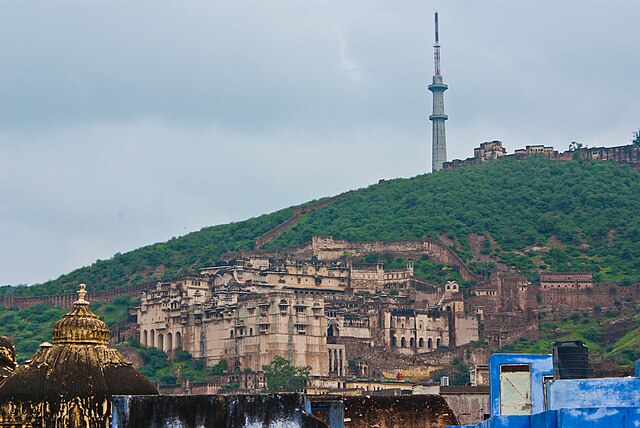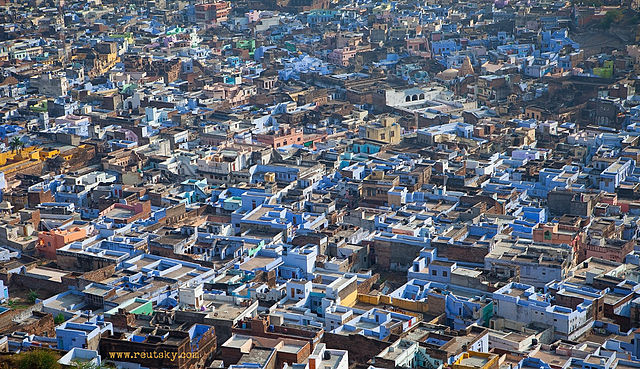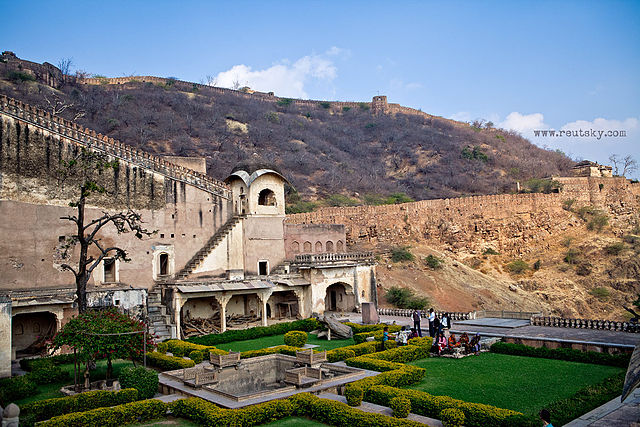Have you ever wondered what it’s like to experience the weather in a place where history whispers through ancient forts and the skies paint a new story every season? Welcome to Bundi, a lesser-known jewel in Rajasthan, India, where the weather does more than just set the temperature—it shapes the soul of the city. From blistering summer days to monsoon showers that turn the arid landscape into a lush canvas, Bundi’s climate is as vibrant and varied as its culture. Let’s embark on a journey through Bundi’s weather, exploring what each season brings and how it influences life in this charming town. Whether you’re planning a visit or just curious, this guide will give you a front-row seat to Bundi’s meteorological magic.
Why Bundi’s Weather Matters
Bundi, nestled in the Hadoti region of Rajasthan, isn’t just about its stunning palaces and intricate stepwells. Its weather plays a starring role in shaping the experience of locals and travelers alike. The climate here is a classic desert pattern—hot and dry for most of the year, with brief but dramatic bursts of rain and a fleeting, chilly winter. Understanding Bundi’s weather isn’t just about packing the right clothes; it’s about knowing when to catch the town at its most vibrant, when festivals light up the streets, or when the surrounding hills turn green. So, why does the weather matter? Because it’s the backdrop to every adventure you’ll have in this historic town.
A Snapshot of Bundi’s Climate
Bundi’s climate falls under the semi-arid category, with three distinct seasons: summer, monsoon, and winter. Summers are scorching, monsoons are refreshing, and winters are crisp and cool. The town sits at an elevation of about 268 meters, which tempers the extremes slightly compared to other Rajasthani cities like Jaisalmer or Jodhpur. But don’t be fooled—Bundi’s weather can still pack a punch! Average temperatures range from a toasty 40°C (104°F) in summer to a chilly 5°C (41°F) in winter, with rainfall mostly concentrated in the monsoon months of July to September. This diversity makes Bundi a year-round destination, but each season offers a unique flavor.
Summer in Bundi: Embracing the Heat
Picture this: the sun blazing overhead, casting sharp shadows on Bundi’s ancient fort walls, and the air shimmering with heat. That’s summer in Bundi, stretching from March to June. Temperatures often climb into the high 30s or low 40s Celsius (95–104°F), and the days feel like walking through a furnace. But there’s a certain charm to it. The streets are quieter, the light is golden, and the evenings bring a warm, lazy vibe perfect for sipping chai at a local café. If you’re visiting in summer, lightweight cotton clothes, sunscreen, and a trusty hat are your best friends.
Surviving the Summer Scorch
How do locals deal with the heat? They’ve mastered the art of staying cool. Early mornings and late evenings are when the town buzzes with activity—think bustling markets and lively street food stalls. During the day, many retreat to the shade of havelis or the cool interiors of Bundi Palace. For travelers, this is the time to explore indoor attractions like the palace’s famous murals or the intricate stepwells like Raniji ki Baori. Pro tip: stay hydrated with lassi or sugarcane juice, and avoid midday adventures unless you’re a fan of feeling like a baked cookie.
Summer Festivals and Events
Despite the heat, summer in Bundi isn’t devoid of celebration. The Gangaur festival, usually in March or April, brings vibrant processions and colorful attire as locals honor Goddess Parvati. The streets come alive with music and dance, offering a glimpse into Rajasthan’s rich cultural tapestry. If you’re brave enough to face the heat, these events are a feast for the senses, blending tradition with the summer’s fiery energy.
Monsoon Magic: When Bundi Blooms

Come July, the skies over Bundi open up, and the monsoon arrives like a long-awaited guest. From July to September, the town transforms as rainfall—averaging 600–700 mm annually—turns the dusty landscape into a lush, green paradise. The Aravalli hills surrounding Bundi become a verdant backdrop, and the air is filled with the earthy scent of petrichor. It’s like nature decided to give the town a makeover, and boy, does it look good!
What to Expect During Monsoon
Monsoon in Bundi brings moderate to heavy showers, often accompanied by thunderstorms. The streets might get a bit muddy, and the humidity can feel sticky, but the cooler temperatures (around 25–35°C or 77–95°F) are a welcome relief. The rain also fills up local lakes like Nawal Sagar, creating stunning reflections of the town’s forts and palaces. It’s a photographer’s dream and a time when Bundi feels like it’s straight out of a postcard.
Monsoon Travel Tips
Planning a trip during the monsoon? Pack a lightweight raincoat and sturdy shoes, as some areas can get slippery. The Teej festival, celebrated in August, is a highlight, with women in vibrant sarees swinging on decorated swings and singing folk songs. It’s a joyous time to visit, but be prepared for occasional travel disruptions due to rain. Stick to paved roads and check local weather updates to stay safe.
Winter Wonders: Bundi’s Cool Escape
If summer is a fiery dance and monsoon a lush symphony, winter in Bundi is a cozy embrace. From November to February, temperatures drop to a comfortable 5–25°C (41–77°F), making it the most pleasant time to explore. The air is crisp, the skies are clear, and the town feels like it’s wrapped in a soft blanket of coolness. It’s no wonder winter is peak tourist season in Bundi.
Exploring Bundi in Winter
Winter is perfect for wandering through Bundi’s narrow lanes, visiting the Taragarh Fort, or taking a day trip to nearby attractions like the Jait Sagar Lake. The cooler weather makes outdoor activities like hiking or cycling a joy, and the clear skies offer stunning views of the starry night. Locals often gather around bonfires, sharing stories and warm cups of masala chai—join them for an authentic taste-And don’t miss the chance to taste some hot jalebis!
Winter Festivals and Vibes
Winter brings festivals like Kajli Teej and the Bundi Utsav, celebrating the town’s art, culture, and heritage. These events are a fantastic way to soak up the local vibe, with folk performances, craft markets, and traditional food stalls. Bundle up in a light shawl and dive into the festivities—it’s like stepping into a living history book.
How Weather Shapes Bundi’s Culture
Bundi’s weather isn’t just a backdrop; it’s woven into the fabric of its culture. The scorching summers inspire the architecture of airy havelis and shaded courtyards, while the monsoon’s arrival is celebrated with festivals that give thanks for the rain. Winter’s cool days bring communities together around bonfires and storytelling sessions. The weather dictates the rhythm of life here, from the timing of festivals to the types of crops grown in the surrounding fields.
Seasonal Foods and Traditions
Each season brings its own culinary delights. In summer, light dishes like curd-based curries keep things cool. Monsoon calls for spicy pakoras paired with chai, perfect for rainy days. Winter is all about hearty meals like dal baati churma, a Rajasthani classic that warms the soul. These traditions show how Bundi’s people have adapted to their climate, turning challenges into opportunities for flavor and festivity.
Best Time to Visit Bundi
So, when’s the best time to visit Bundi? It depends on what you’re after. Winter (November–February) is ideal for comfortable weather and vibrant festivals, making it perfect for sightseeing. Monsoon (July–September) offers lush scenery and fewer crowds, but be ready for rain. Summer (March–June) is less crowded and cheaper, but you’ll need to brave the heat. Each season has its charm, so pick the one that suits your vibe and pack accordingly.
Packing Tips for Every Season
No matter when you visit, a few essentials will make your trip smoother. For summer, think breathable fabrics, sunglasses, and a water bottle. Monsoon calls for waterproof gear and quick-dry clothes. In winter, a light jacket and scarf will keep you cozy during chilly mornings and evenings. And don’t forget comfortable shoes—Bundi’s cobblestone streets are best explored on foot.
Weather’s Impact on Travel Planning

Bundi’s weather can make or break your travel plans, so it’s worth considering. Summer might limit outdoor activities to early mornings, while monsoon could affect road travel to nearby sites. Winter is the easiest for planning, with clear skies and mild temperatures. Check local weather forecasts before booking, and always have a backup plan for indoor activities like visiting museums or art galleries if the weather turns.
Local Weather Resources
Want to stay ahead of the weather? Apps like AccuWeather or the Indian Meteorological Department’s website offer reliable forecasts for Bundi. Locals also share updates on social media, giving you real-time insights into sudden showers or heatwaves. Trust me, a little prep goes a long way in making your trip hassle-free.
Bundi’s Weather and Sustainable Travel
Bundi’s weather also raises questions about sustainable travel. The region faces challenges like water scarcity in summer and flooding during heavy monsoons. As a traveler, you can help by choosing eco-friendly accommodations, conserving water, and supporting local businesses that prioritize sustainability. It’s like leaving a small footprint on a big journey—every bit counts.
Conclusion: Embracing Bundi’s Weather
Bundi’s weather is more than just numbers on a forecast—it’s a living, breathing part of the town’s charm. Whether you’re basking in the summer sun, dancing in the monsoon rain, or warming up by a winter bonfire, the climate shapes every moment of your experience. Each season offers a unique lens through which to see Bundi’s forts, lakes, and vibrant culture. So, pack your bags, check the weather, and dive into the adventure. Bundi’s waiting to show you its seasonal magic—ready to take the plunge?
FAQs
1. What is the best season to visit Bundi for sightseeing?
Winter (November–February) is the best season for sightseeing in Bundi, with pleasant temperatures and clear skies ideal for exploring forts, stepwells, and lakes.
2. How hot does it get in Bundi during summer?
Summer temperatures in Bundi can reach 40–45°C (104–113°F) from March to June, with hot, dry days and warm nights.
3. Is it safe to travel to Bundi during the monsoon?
Yes, it’s generally safe, but expect occasional heavy rain and potential travel disruptions. Carry waterproof gear and check local weather updates.
4. What should I pack for a winter trip to Bundi?
Pack light layers, a jacket, and a scarf for chilly mornings and evenings. Comfortable walking shoes are a must for exploring the town.
5. Are there any weather-related festivals in Bundi?
Yes, festivals like Teej (monsoon) and Gangaur (summer) are tied to the seasons, celebrating rain and cultural traditions with vibrant events.

